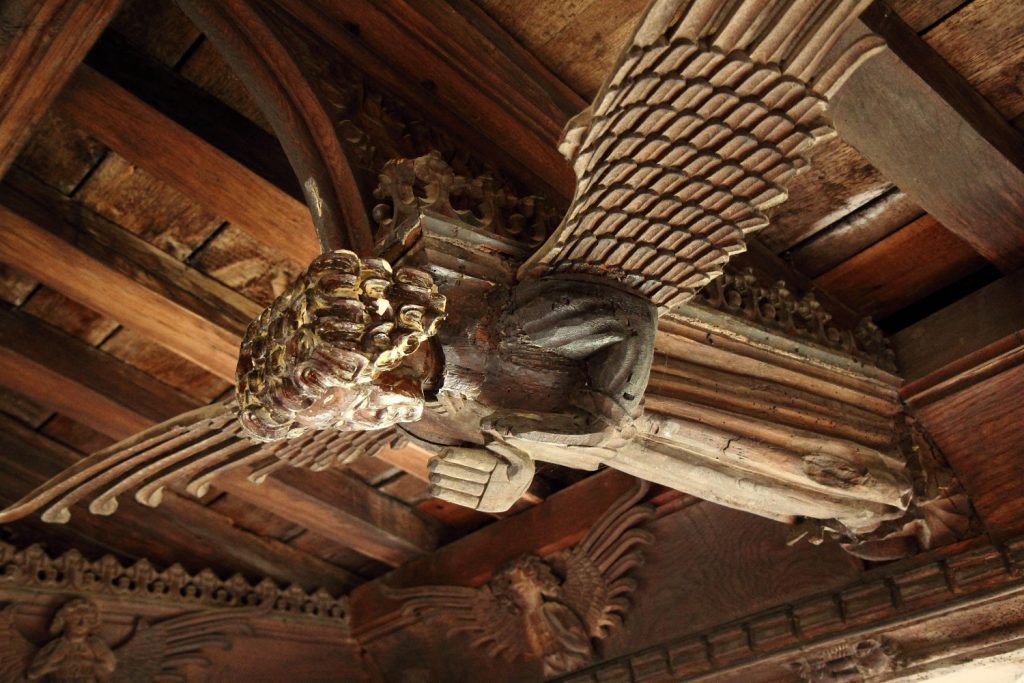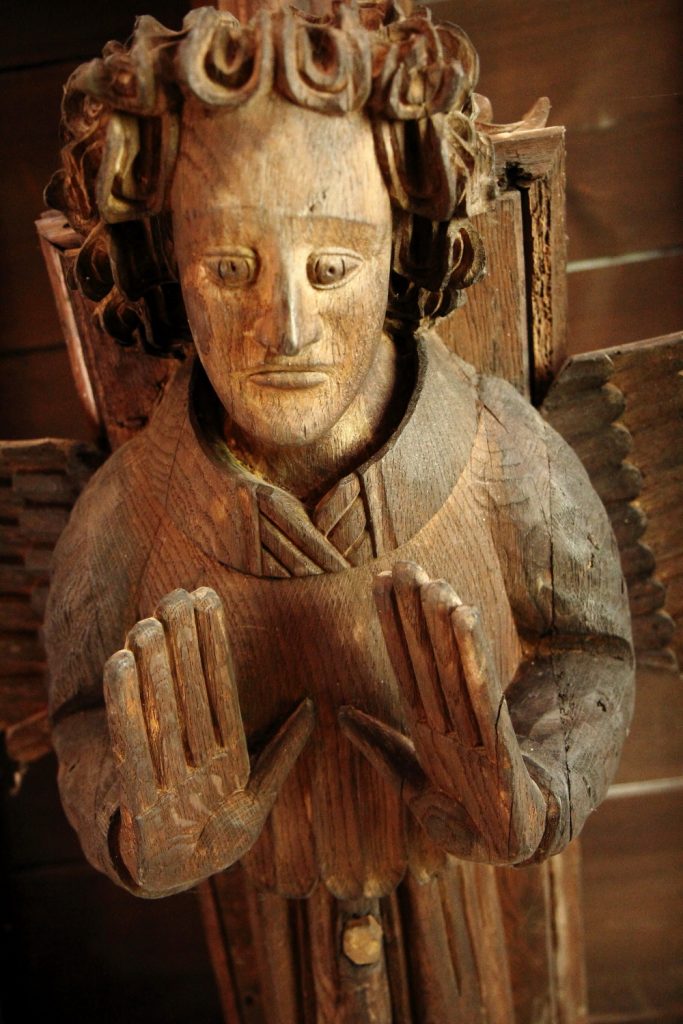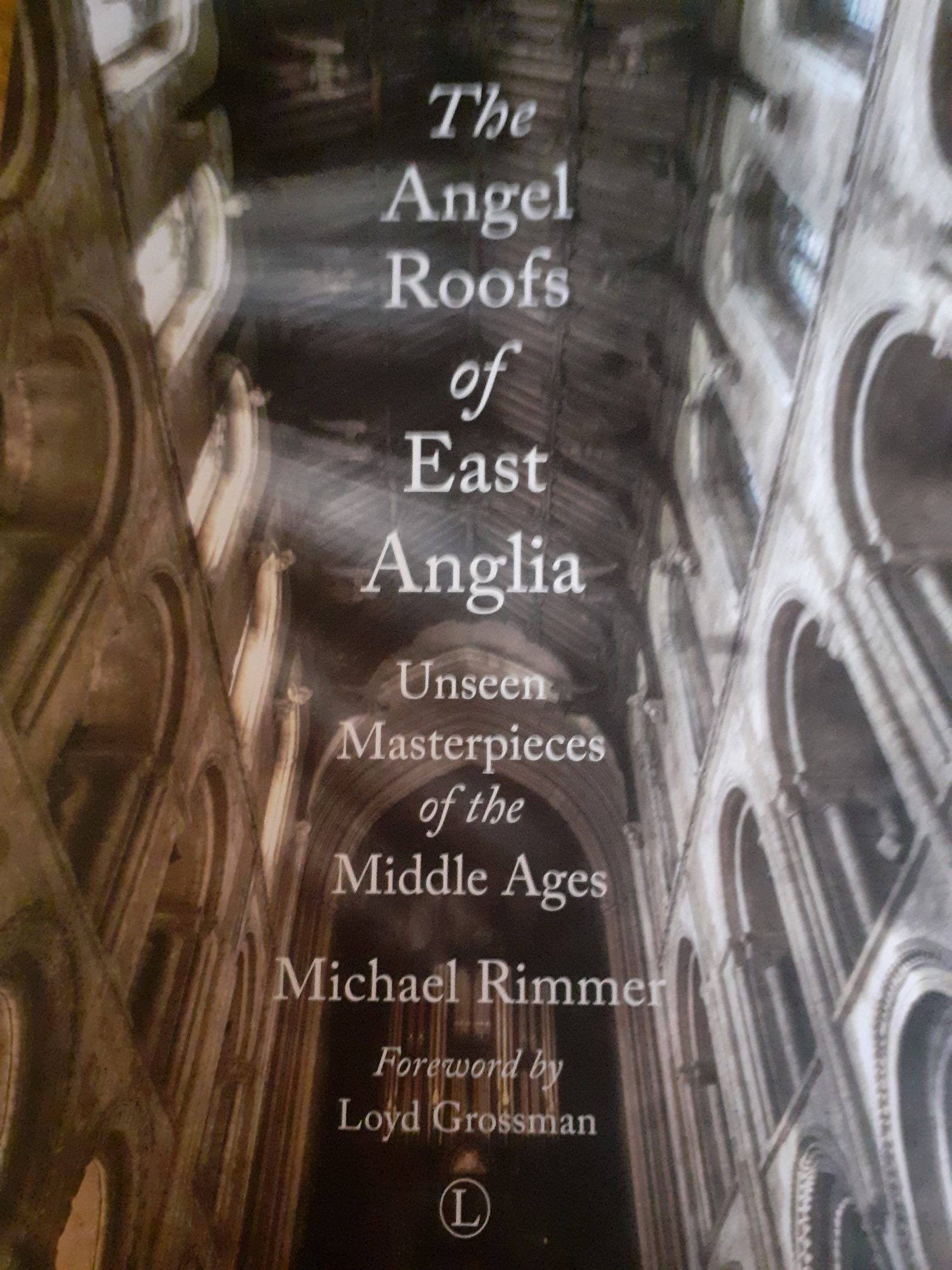Contributor: Rosalind Esche
I count myself lucky to live in East Anglia, where there are more angel roofs than anywhere else in the country. Of the almost 170 surviving angel roofs in England and Wales, nearly 70% are in East Anglia, traditionally defined as comprising Norfolk (26%), Suffolk (29%) and Cambridgeshire (14%). Counties adjoining the region (Lincolnshire, Bedfordshire, Essex, Hertfordshire and Northamptonshire) account for a further 14%. There are many theories about why this is the case. One follows the neuro-plasticity argument put forward by art historians, which says that the artistic images a society produces are a subconscious product of their environment and sensory influences. In other words, the flat East Anglian landscape, which boasts vast open skies full of birds, inspired medieval artists to carve flocks of feathered angels into church roofs. I love this theory but other places have bird-filled skies but no angel roofs.
Another theory says that angel roofs were a counterblast against the Lollard Heresy of the 1400s, which was particularly strong in East Anglia (the first Lollard martyr, William Sawtrey, was a priest at King’s Lynn where probably the first angel roof in the region was constructed). The Lollards rejected images in churches as idolatrous, and it has been argued that after Sawtrey’s martyrdom at the stake in 1401, there was a reassertion of Roman Catholic orthodoxy through art, hence angel roofs repudiating Sawtrey’s heretical statement that he would “rather worship a man … than an angel of God.” However, the idea that the first angel roof in the region, at St. Nicholas in King’s Lynn (then Bishop’s Lynn), thought to date from around 1405-1415, was motivated by a desire to repudiate a minor heresy several years after Sawtrey’s execution in London, is somewhat tenuous. Perhaps the Church was eager to stamp its authority on the church which had spawned a heretical priest, but would angel roofs have thereafter necessarily spread throughout the region as they did?
A third, and to my mind more convincing theory, argued eloquently by Michael Rimmer in his excellent book The Angel Roofs of East Anglia, makes the case for the spread of master craftsmanship throughout the eastern counties as a result of the royal carpenter Hugh Herland being appointed to construct a new harbour at Yarmouth, soon after completing the first known angel roof in England at Westminster Hall, in around 1398. Rimmer draws attention to the correlation between hammer beam roofs and angel roofs. According to research conducted by architect Birkin Haward in 1999, of 188 surviving single hammer beam roofs in England, 65% (124) are in East Anglia. The figures are even more startling for double hammer beam roofs – all of the 32 surviving double hammer beam roofs in England are in East Anglia and Essex. Hammer beam roofs provide an ideal surface on which to carve an angel figure. Bear in mind that such figures would have to be large scale in order to be clearly visible from the ground beneath a soaring church nave.

It is likely that Herland would have taken his most trusted craftsmen with him to Yarmouth, in addition to taking his expertise. Four prominent East Anglians of substance and status, Hugh atte Fenn, John de Cleye, Robert atte Fenn and William Oxeneye, were appointed to work alongside Herland in recruiting labour for the Yarmouth harbour project. These men were wealthy merchants involved in local governance, two of them members of Parliament. Rimmer argues that Herland and his craftsmen would likely have discussed the Westminster Hall angel roof with both the wealthy merchants they met, the kind of influential men who would commission such projects in their local churches, and also with the labourers they recruited along the way. Skills and techniques would have been passed on to craftsmen in local communities throughout the region. Herland and his men would also likely have come into contact with shipwrights, given the eastern coastal regions’s maritime trading, who would have had experience of large scale timber construction. There is something about large scale hammer beam construction carved with angels which evokes carved wooden figureheads on ships’ prows.

Michael Rimmer’s theory, articulated with great clarity in The Angel Roofs of East Anglia, is a more convincing argument than the others outlined here, backed up as it is with thorough historical research and attention to the multiple factors likely to have contributed to the proliferation of angel roofs in East Anglia, such as the wealth, produced by trade and manufacture, acquired by a new “middle class” keen to display its status in the community, woodcarving expertise and experience of large scale construction in the region, and the arrival of royal carpenter Hugh Herland, following his impressive achievement at Westminster Hall.
This brief summary barely does justice to Rimmer’s compelling analysis of why this glorious phenomenon graces so many East Anglian medieval churches. The Angel Roofs of East Anglia is well worth reading for his cogent arguing of a plausible theory, and for its stunning photographs of angel roofs.
Of course there’s always the possibility that we simply have more angels in East Anglia …
The Angel Roofs of East Anglia: unseen masterpieces of the Middle Ages by Michael Rimmer, published by The Lutterworth Press, 2015.

I hope there is an ambitious photographer somewhere planning a book of illustrations of all the angel carvings. Every church that has some could surely sell the book, and hopefully put some takings towards maintenance of these lovely works of art. The book could be a top purchase for presents next Christmas.
I, too, like the idea of the neuro-plasticity argument that angel roofs of East Anglia are a creative result of the environment and psychological landscape of the artist’s world. The sense of awe which they inspire in me makes this view meaningful to me. I have not seen the roof of St Peter, Upwell, for many years and, after reading this article, I am now keen to see it again in the near future. Thank you.
Fascinating read thank you!
Given your interest in angel roofs, you might be interested to see these hand-carved angels available for order from Parliament Shop.
Link here: https://mailchi.mp/ad8eddfd6bb4/william-barsley-mtm
Thank you. You would love the countless angel roofs in medieval churches throughout East Anglia. I hope you get a chance to see some of them. Take a look at Michael Rimmer’s book The Angel Roofs of East Anglia, it’s full of photographs of stunning angels. Thank you for sharing the link to the Parliament shop – your carvings are very impressive and beautiful.